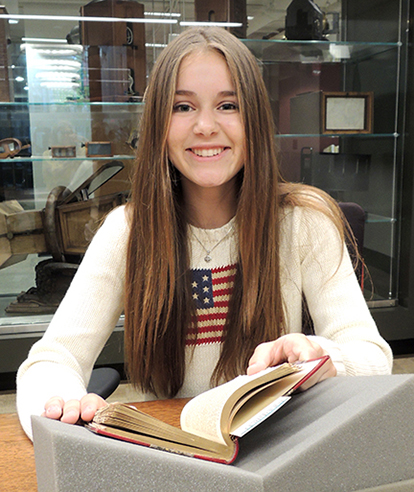 It’s not everyday you get to hold history in your hands! But when Princeton University sophomore Abigail Readlinger gifted us a copy of her children’s novel, I just had to facilitate a connection between her love of American history and our special collections. Later, I asked Abigail to write about her experience and share the inspiration for her charming book…
It’s not everyday you get to hold history in your hands! But when Princeton University sophomore Abigail Readlinger gifted us a copy of her children’s novel, I just had to facilitate a connection between her love of American history and our special collections. Later, I asked Abigail to write about her experience and share the inspiration for her charming book…
Firestone Library’s Special Collections gave me the chance to travel through time. Among its vast array of original documents and fundamental texts is Alexander Hamilton’s very own copy of The Federalist Papers. Writing in the late 1780’s, Hamilton—along with John Jay and James Madison—drafted this series of eighty-five essays in hopes to encourage the ratification of the new Constitution. These Federalist Papers, as evidenced by their substantial contribution to the adoption of our government, are ones of profound and utmost importance. They reveal the nature of American political thought and a corresponding guide by which we ought to live by.
I myself am somewhat obsessed when it comes to The Federalist Papers. Forced to read them during my freshman year of high school, I became immediately attached. I had always loved American history, and The Federalist Papers seemed to transport me directly into the minds of our great Founding Fathers. Desperately bored during the pandemic, but armed with my love for The Federalist Papers, I began to write what is now a published children’s book: The Young Federalists.
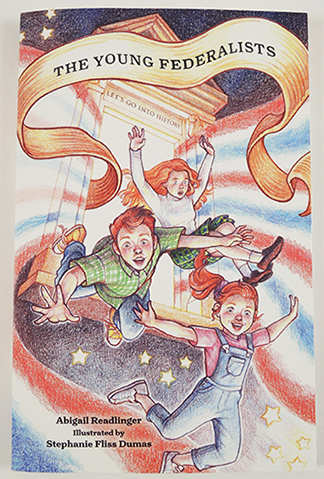
The Young Federalists. Written by Abigail Readlinger and illustrated by Stephanie Fliss Dumas. Mascot Kids, an imprint of Amplify Publishing Group, 2022
The story follows the journey of the Kennedy siblings—Reagan, AJ, and Dolley—as they travel through time, meet Alexander Hamilton and discuss (over a cup of tea!) the importance of Federalist No.1. Just as Hamilton endeavored to inspire his generation through his writing, so also do I hope to inspire mine. The value of the American way is timeless—from then to now, for old and for young.
So when I heard Hamilton’s personal copy of The Federalist Papers just so happened to be located in my own university’s special collections, I jumped at the opportunity to see it.

I still cannot quite articulate the feeling of flipping through the pages of a book both so informative in my life and belonging to one of my most beloved heroes. In 2024, author of The Young Federalists, I was holding the same book that Alexander Hamilton, author of The Federalist Papers, once held over two hundred years earlier.
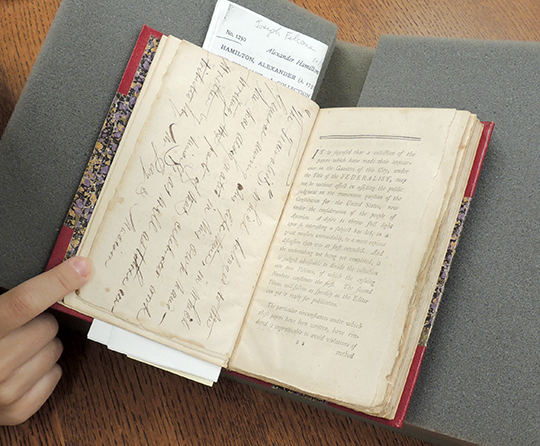
The Federalist Papers. Special Collections, Princeton University Library.
Just like the characters in my book, I was having my own time travel adventure. Visiting special collections, peering over the handwritten scribblings of Hamilton’s notes, and experiencing history hands on, has been by far one of my favorite Princeton experiences. There is so much to explore in our university’s incredible collection, and to have had this opportunity has really been beyond my wildest dreams.
Would you like to see inside this copy of The Federalist Papers? You’ll find a digitized version here. All are welcome to conduct research in Special Collections at Princeton University. If you are interested in visiting, you will find more information here. Do you have a question for Abigail? Email or visit her Instagram.

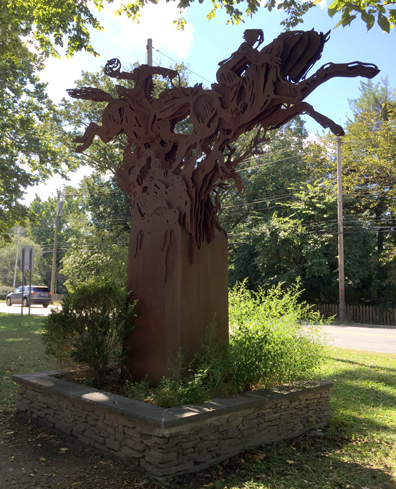
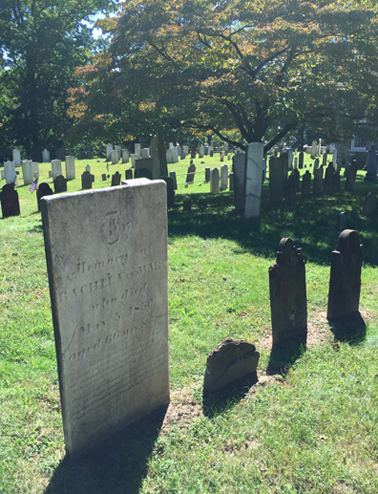
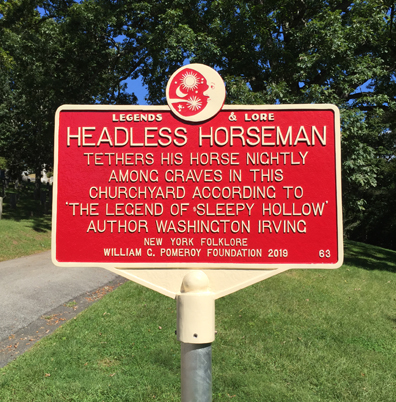 The churchyard is part of the Old Dutch Church of Sleepy Hollow, which was constructed in the 17th century. Featured in Irving’s short story, it’s one of the of the oldest churches in New York State.
The churchyard is part of the Old Dutch Church of Sleepy Hollow, which was constructed in the 17th century. Featured in Irving’s short story, it’s one of the of the oldest churches in New York State.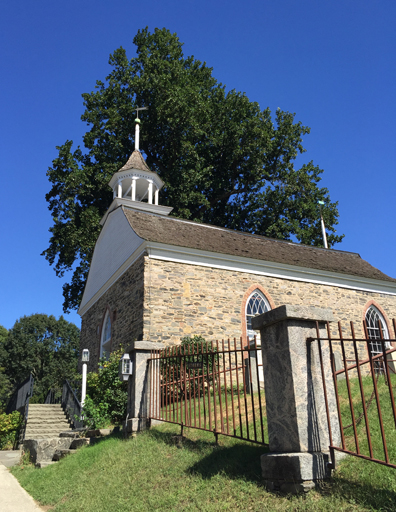 From the church, we headed down to the FAMOUS BRIDGE. Which, as it turns out, is the “is the most popular destination in Sleepy Hollow that doesn’t exist.” Because the simple 1700s wooden bridge that inspired Irving has long since disintegrated (you can read a little more bridge history
From the church, we headed down to the FAMOUS BRIDGE. Which, as it turns out, is the “is the most popular destination in Sleepy Hollow that doesn’t exist.” Because the simple 1700s wooden bridge that inspired Irving has long since disintegrated (you can read a little more bridge history 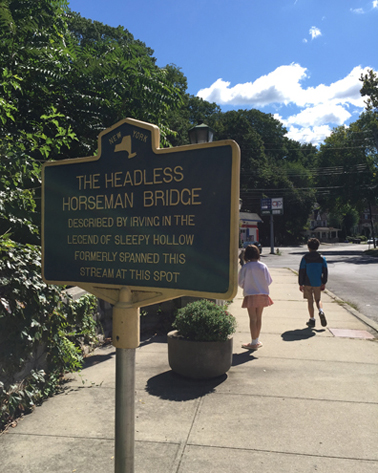 The bridge is located in a pretty major intersection with a gas station nearby. So it’s almost a blink-and-you’ll-miss-it historical literary moment. Here’s the bridge as it stands today…
The bridge is located in a pretty major intersection with a gas station nearby. So it’s almost a blink-and-you’ll-miss-it historical literary moment. Here’s the bridge as it stands today…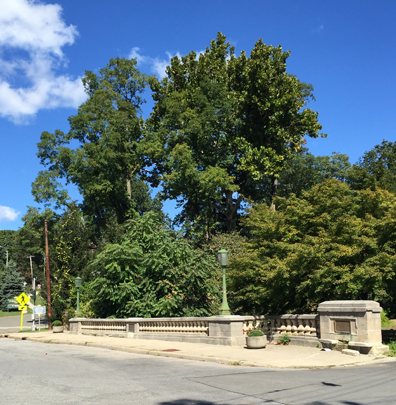
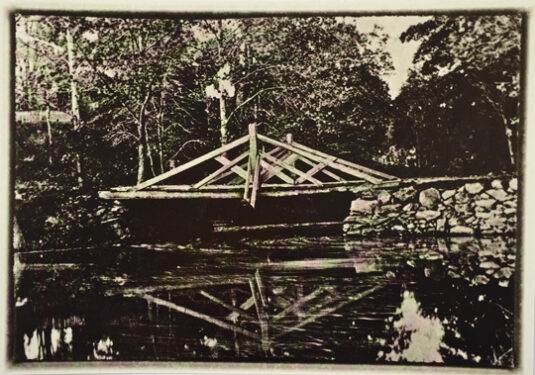 Not far from the bridge is the town’s official statue, depicting Ichabod’s fatal race home. This was a bit of a surprise too. I expected something more traditional. But I like the metal layers on this interpretation – they’re almost like a paper cut silhouettes. Unveiled Halloween 2006, the statue was designed by artist
Not far from the bridge is the town’s official statue, depicting Ichabod’s fatal race home. This was a bit of a surprise too. I expected something more traditional. But I like the metal layers on this interpretation – they’re almost like a paper cut silhouettes. Unveiled Halloween 2006, the statue was designed by artist 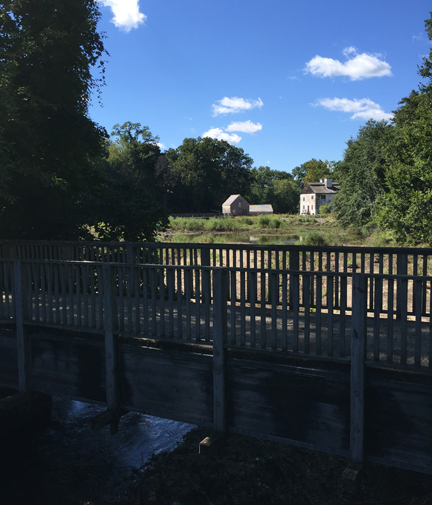 We also got an unexpected surprise at the nearby Philipse Manor train station, which operates on the Metro-North Railroad’s Hudson Line. The station’s pedestrian bridge had really cool stained glass windows…
We also got an unexpected surprise at the nearby Philipse Manor train station, which operates on the Metro-North Railroad’s Hudson Line. The station’s pedestrian bridge had really cool stained glass windows…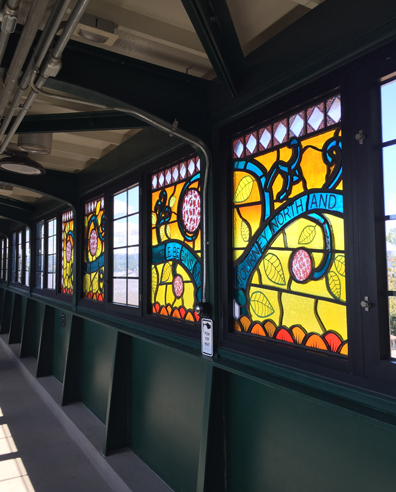 And check out the VIEW of the Hudson River on the other side!
And check out the VIEW of the Hudson River on the other side!
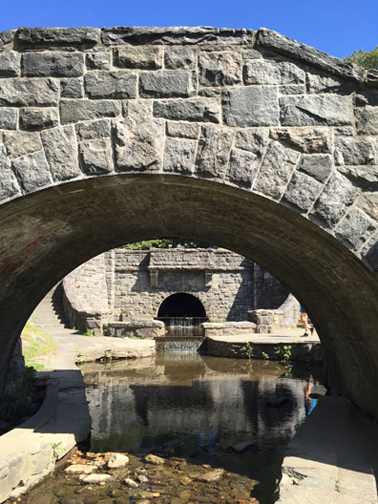 At this point, we were getting hungry, so we headed over to Tarrytown for some bites. Main Street was charming, walk-able, and there were plenty of eateries to chose from.
At this point, we were getting hungry, so we headed over to Tarrytown for some bites. Main Street was charming, walk-able, and there were plenty of eateries to chose from.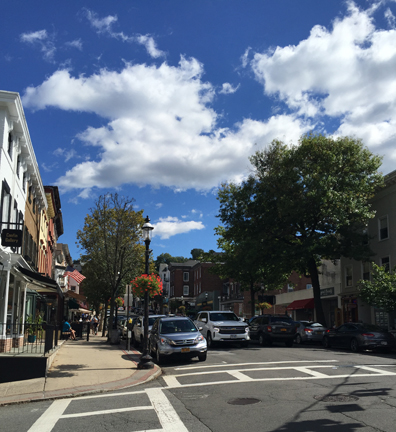 One other building of note is the historic Tarrytown Music Hall, a 136 year-old
One other building of note is the historic Tarrytown Music Hall, a 136 year-old 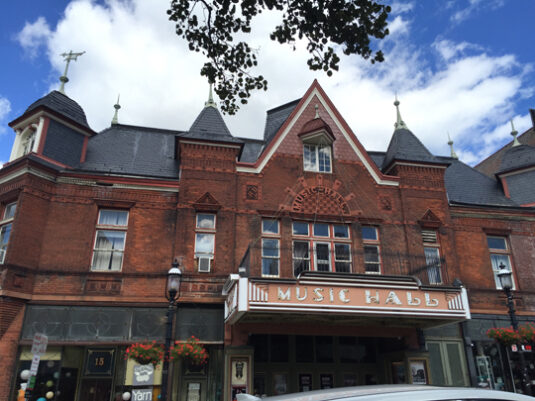 The sun was starting to set as we headed back to New Jersey with haunted places still on our minds. This Halloween, when I revisit Irving’s tale, I’ll actually be able to say that I’ve walked through the cemetery, stood next to the church, and crossed the bridge! How awesome is that?
The sun was starting to set as we headed back to New Jersey with haunted places still on our minds. This Halloween, when I revisit Irving’s tale, I’ll actually be able to say that I’ve walked through the cemetery, stood next to the church, and crossed the bridge! How awesome is that?